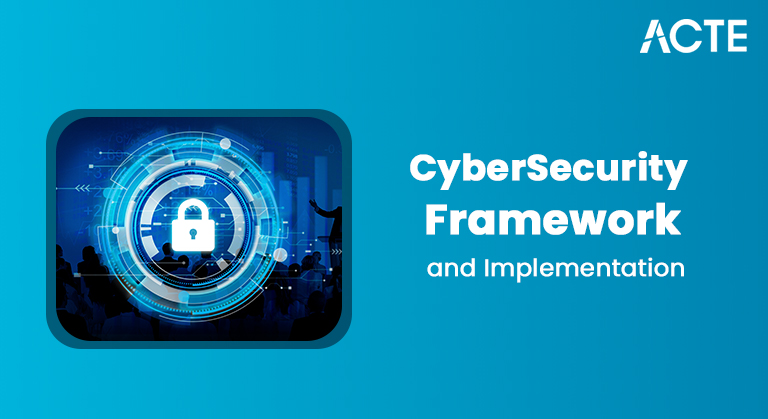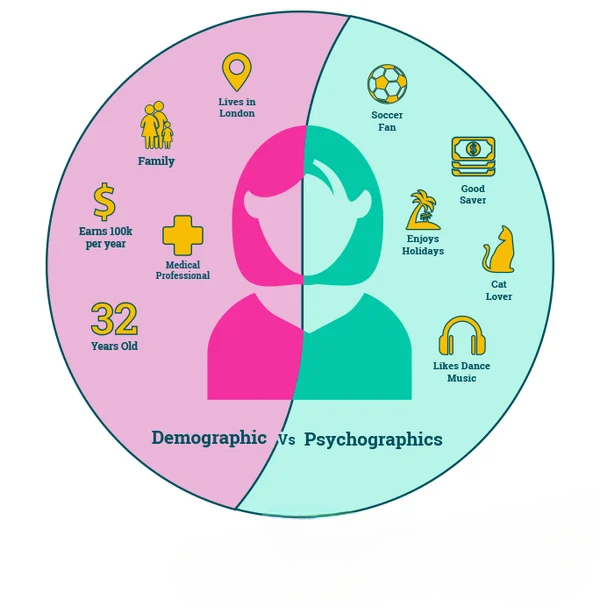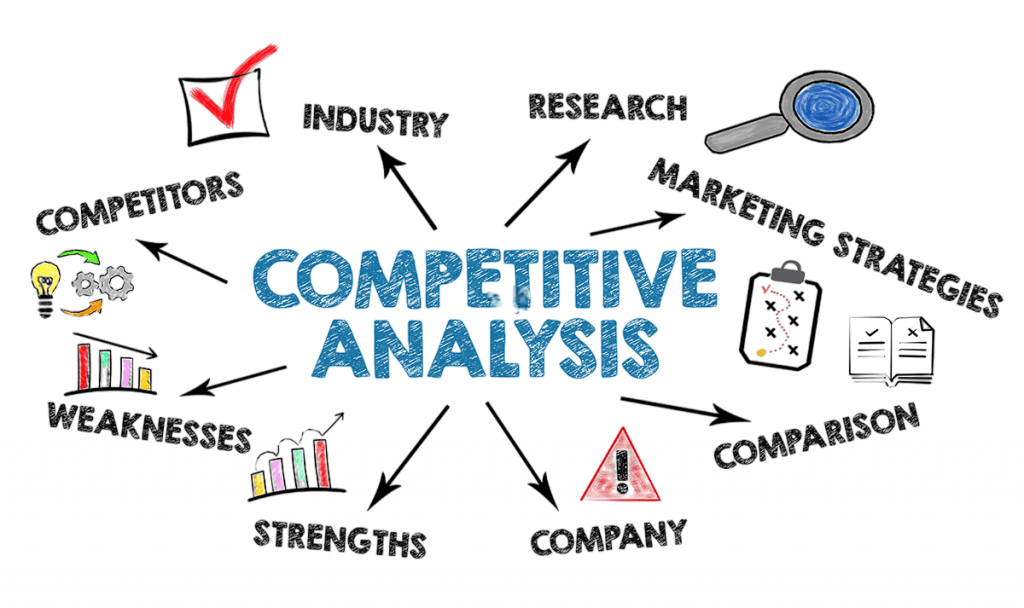
- Importance of Knowing Your Audience
- Demographics and Psychographics
- Segmentation Techniques
- Customer Surveys and Feedback
- Competitor Analysis
- Creating Buyer Personas
- Using Google Analytics
- Social Media Insights
- Conclusion
How to Define Target Audience for Your Business
Defining your target audience is one of the most critical steps in building a successful business. A well-defined target audience allows businesses to tailor their marketing strategies, products, and services to meet the specific needs and preferences of potential customers. Without a clear understanding of who your audience is, Digital Marketing Training efforts can become unfocused and ineffective, leading to wasted resources and missed opportunities. In this article, we will explore various aspects of identifying and refining your target audience to drive business growth.Defining your target audience is a critical first step in creating effective marketing strategies. A target audience is a specific group of people most likely to be interested in your product or service, based on factors like age, gender, location, income, interests, and buying behavior. To define this group, start by analyzing your existing customers to identify common traits and preferences. Use tools like Google Analytics, social media insights, and customer surveys to gather data on who interacts with your brand. Segment your audience into clear categories demographics, psychographics, and behavior to better understand their needs and motivations. You can also study competitors to see who they’re targeting and how. From there, develop detailed buyer personas that represent your ideal customers, which helps tailor your messaging, product offerings, and marketing efforts. Clearly defining your target audience allows you to focus your resources more effectively, deliver personalized content, and ultimately improve engagement and conversion rates.
Ready to Get Certified in Digital Marketing? Explore the Program Now Digital Marketing Online Training Offered By ACTE Right Now!
Importance of Knowing Your Audience
- Improves Marketing Effectiveness – Tailoring messages to the right audience increases engagement and conversion rates.
- Enhances Customer Experience – Understanding audience needs allows you to deliver more relevant and personalized content.
- Optimizes Budget and Resources – Targeted campaigns reduce wasted ad spend and focus efforts where they matter most Google’s Match Type Changes .
- Strengthens Brand Loyalty – When customers feel understood, they’re more likely to trust and stay loyal to your brand.
- Informs Product Development – Knowing your audience helps you create products or services that truly meet their needs.
- Boosts Competitive Advantage – Deep audience insights allow you to differentiate your brand in a crowded market.
- Drives Better Content Strategy – You can create content that resonates with specific audience segments for higher impact.
- Enables Data-Driven Decisions – Audience analysis provides actionable insights to guide your overall marketing strategy.
Demographics and Psychographics
Defining your target audience starts with understanding demographics basic statistical data such as age, gender, income level, education, occupation, and marital status. These provide a snapshot of who your customers are. However, to build a more comprehensive profilebusinesses also need to explore psychographics. This includes lifestyle, interests, values, attitudes, and buying behavior Inbound Marketing. While demographics tell you who the customer is, psychographics explain why they buy. Combining both gives a holistic view of your audience and allows for more precise targeting.Demographics and psychographics are two essential components for understanding and defining your target audience.

Demographics refer to the statistical characteristics of a population, such as age, gender, income, education level, occupation, Segmentation Techniques and geographic location. These factors help businesses identify who their customers are on a basic level. On the other hand, psychographics delve deeper into the psychological aspects of your audience, including their values, attitudes, interests, lifestyles, and behaviors. While demographics tell you who your audience is, psychographics reveal why they make certain purchasing decisions and what motivates their behavior. Combining both demographic and psychographic data allows marketers to create more accurate and detailed buyer personas, enabling tailored messaging and product offerings that truly resonate with their customers’ needs and preferences. This holistic understanding is crucial for developing effective marketing strategies that connect with the right people in meaningful ways.
To Explore Digital Marketing in Depth, Check Out Our Comprehensive Digital Marketing Training To Gain Insights From Our Experts!
Segmentation Techniques
- Demographic Segmentation – Dividing the market based on age, gender, income, education, occupation, and family status.
- Geographic Segmentation – Targeting customers based on location such as country, region, city, or climate.
- Psychographic Segmentation – Grouping customers by lifestyle, values, interests, personality, and social class.
- Behavioral Segmentation – Segmenting based on purchasing behavior, usage rate, brand loyalty, and benefits sought.
- Technographic Segmentation – Categorizing audiences by their technology usage, device preferences, and software habits Benefits of being a Content Marketer.
- Firmographic Segmentation – Used mainly in B2B markets, dividing companies by industry, company size, or revenue.
- Needs-Based Segmentation – Focusing on specific customer needs or pain points your product or service addresses.
- Occasion-Based Segmentation – Targeting based on specific occasions, events, or seasonal behaviors.
Customer Surveys and Feedback
Direct input from your customers can provide invaluable insights into their preferences, needs, and pain points. Conducting surveys, interviews, and feedback forms helps you understand what motivates your audience and how they perceive your brand. Questions can range from what influences their buying decisions to what features they value most in a product or service. Analyzing this data helps refine your marketing strategies and ensures your offerings align with customer expectations.Customer surveys and feedback are invaluable tools for gaining direct insights into your audience’s preferences, needs, and experiences. By actively asking customers about their opinions, satisfaction levels, and suggestions, businesses can identify strengths to build on and areas that need improvement. Surveys can be conducted through various channels, including email, social media, website pop-ups, or phone interviews, making it easy to gather diverse perspectives. Feedback helps uncover customer pain points, Digital Marketing Training measure product or service effectiveness, and validate assumptions about your target market. Moreover, it fosters a sense of engagement and loyalty, as customers appreciate when their voices are heard and their input leads to meaningful changes. Integrating survey results into your marketing strategy enables more precise targeting, personalized communication, and product development that truly meets customer expectations, ultimately driving better business outcomes.
Looking to Master Digital Marketing? Discover the Digital Marketing Expert Masters Program Training Course Available at ACTE Now!
Competitor Analysis
Studying your competitors can reveal a lot about your potential audience. Look at who they are targeting, what messaging they use, and which platforms they are active on. Identify gaps in their strategy and look for underserved segments that you can tap into. Display Advertising. Tools like SEMrush, Ahrefs, and SimilarWeb can provide insights into competitor traffic sources and audience behavior.

Learning from your competition allows you to position your brand more effectively and find opportunities to differentiate yourself in the market.
Creating Buyer Personas
- Gather Data – Collect information from customer surveys, interviews, analytics, and market research.
- Identify Demographics – Define age, gender, location, education, occupation, and income level of your ideal customers.
- Understand Psychographics – Explore values, interests, lifestyle, personality traits, and motivations.
- Analyze Behavior Patterns – Look at purchasing habits, preferred channels, brand loyalty, and pain points.
- Create Detailed Profiles – Develop fictional but realistic personas representing different segments of your audience.
- Give Them Names and Stories – Humanize personas with names, backgrounds, goals, and challenges to make them relatable.
- Use Personas to Guide Strategy – Tailor marketing messages, product development, and customer service based on personas.
- Regularly Update – Continuously refine personas as customer behaviors and market conditions change.
Using Google Analytics
Google Analytics is a powerful tool that provides detailed insights into who is visiting your website, what pages they view, how long they stay, and what actions they take. By examining this data, you can identify patterns in user behavior and segment your audience based on age, gender, location, interests, and more. This information helps in refining your target audience and making data-driven decisions for your marketing campaigns.Google Analytics is a powerful tool that helps businesses understand how visitors interact with their website, providing valuable data to define and refine target audiences. By tracking metrics such as user demographics, behavior flow, session duration, Video Marketing and traffic sources, Google Analytics offers insights into who your visitors are, what content they engage with most, and how they navigate your site. This information allows marketers to identify patterns and preferences, segment users effectively, and tailor marketing strategies accordingly. Additionally, features like goal tracking and conversion funnels help measure the effectiveness of campaigns and pinpoint areas for improvement. By regularly analyzing Google Analytics data, businesses can make informed decisions that enhance user experience, increase engagement, and ultimately drive better results.
Preparing for Digital Marketing Job Interviews? Have a Look at Our Blog on Digital Marketing Interview Questions and Answers To Ace Your Interview!
Social Media Insights
Social media platforms like Facebook, Instagram, Twitter, and LinkedIn offer analytics tools that reveal information about your followers. You can learn about their demographics, online behavior, interests, and how they interact with your content. Social media insights can help identify which types of posts generate the most engagement and which segments are most responsive to your messaging. This allows you to optimize your content strategy and strengthen your relationship with your audience.
- Demographics – Understand the age, gender, location, and interests of your followers.
- Engagement Metrics – Track likes, comments, shares, and clicks to gauge content performance.
- Content Preferences – Identify which types of posts (videos, images, stories) resonate best with your audience.
- Peak Activity Times – Determine when your audience is most active to schedule posts for maximum reach.
- Follower Growth Trends – Monitor increases or decreases in followers to assess overall brand interest.
- Sentiment Analysis – Analyze comments and messages to understand audience sentiment and feedback.
- Competitor Benchmarking – Compare your social performance with competitors to spot opportunities.
- Campaign Tracking – Measure the success of paid and organic social campaigns using built-in analytics tools.
Conclusion
Understanding and defining your target audience is essential for creating effective marketing strategies that resonate and drive results. By leveraging demographic and psychographic data, using segmentation techniques, and gathering insights through tools like customer surveys, Google Analytics, Digital Marketing Training and social media, businesses can develop detailed buyer personas and deliver personalized experiences. Knowing your audience not only optimizes marketing efforts but also builds stronger customer relationships and fosters long-term loyalty. Investing time and resources into this foundational step ensures your brand connects with the right people, ultimately boosting growth and success.




